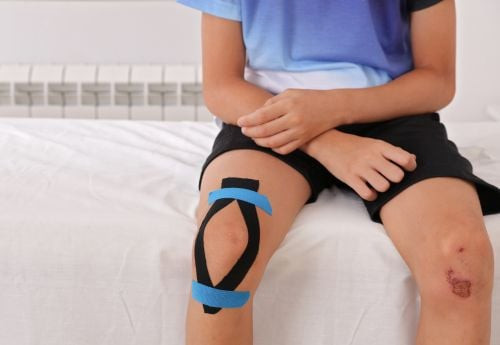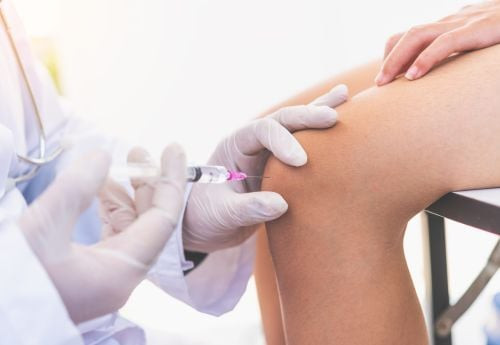Are you fascinated by the intersection of medicine and sports? Becoming a sports doctor allows you to combine your passion for athletics with your medical expertise. At thebootdoctor.net, we provide a clear roadmap on how to become a sports doctor, guiding you through the necessary education, training, and certifications. Discover how to pursue a career in sports medicine, learning about musculoskeletal system, athletic injuries and healthcare.
1. What Is A Sports Medicine Doctor?
A sports medicine doctor is a physician who specializes in the non-surgical treatment of injuries and illnesses related to sports and physical activity. These doctors focus on the musculoskeletal system, which includes bones, muscles, joints, tendons, and ligaments. As a sports medicine doctor, you’ll provide care not only for athletes but also for active individuals who have sustained injuries.
According to the American Medical Society for Sports Medicine (AMSSM), sports medicine physicians have specialized knowledge in the prevention, diagnosis, and management of activity-related injuries.
Sports medicine doctors can work in various settings, including:
- Colleges and universities
- Hospitals
- Clinics
- Professional sports teams
- Private practices
They often serve as medical team leaders, collaborating with coaches, physical therapists, athletic trainers, and orthopedic surgeons. Their responsibilities include diagnosing ailments, recommending treatments, and referring patients to other specialists when necessary. The scope of practice often includes providing dietary advice.
 sports-medicine-knee-treatment
sports-medicine-knee-treatment
Alt text: A doctor in a white coat examines a patient’s knee, highlighting the process of knee joint evaluation in sports medicine.
2. What Does A Sports Medicine Physician Do?
Sports medicine doctors provide a range of non-surgical treatments for sports-related injuries and illnesses affecting the musculoskeletal system. Many collaborate closely with orthopedic surgeons for cases requiring surgery. They also offer guidance to athletes, parents, and coaches on injury prevention and optimal workout routines.
According to the American Academy of Family Physicians (AAFP), sports medicine physicians can help patients improve their athletic performance, recover from injuries, and prevent future problems.
Here are some typical duties of a sports medicine doctor:
- Providing Medical Attention at Athletic Events: Administering on-site medical care during games, training sessions, and practices.
- Identifying and Treating Sports-Related Injuries: Diagnosing and managing injuries such as sprains, strains, fractures, and dislocations.
- Educating on Injury Prevention: Advising athletes and active individuals on how to maintain good health, avoid injuries, and exercise safely.
- Determining Return-to-Play Criteria: Defining when athletes can safely resume playing after an injury.
- Offering Dietary Advice: Providing nutritional guidance to support athletic performance and recovery.
- Communicating with Coaches and Trainers: Monitoring an athlete’s recovery and communicating their medical condition to coaches and trainers.
3. What Are The Education And Training Requirements To Become A Sports Medicine Physician?
The path to becoming a sports medicine physician requires extensive education and training, typically taking at least 12 years after high school. Here are the steps and requirements:
-
Earn a Bachelor’s Degree:
- Complete a four-year undergraduate program.
- While medical schools don’t specify required majors, common choices include biology, chemistry, and pre-medicine.
- Focus on courses in chemistry, biology, math, and literature.
- Prepare for the Medical College Admission Test (MCAT).
-
Complete Medical School:
- Attend and graduate from medical school, earning a Doctor of Medicine (M.D.) or a Doctor of Osteopathic Medicine (D.O.) degree.
- The first two years involve classes on anatomy, physiology, pharmacology, and medical ethics.
- The last two years consist of clinical rotations in hospitals for hands-on experience in patient care, communication, and medical record keeping.
-
Obtain a Medical License:
- Apply for a temporary medical license after graduating from medical school.
- Apply for a full medical license upon completing residency and fellowship to practice sports medicine.
-
Complete a Residency:
- Complete a three- to five-year residency program.
- Residency options include family medicine, emergency medicine, physical medicine and rehabilitation (PM&R), pediatrics, orthopedic surgery, and internal medicine.
- This provides a strong foundation in medicine before specializing in sports medicine.
-
Enroll in a Fellowship:
- Complete a one- to two-year sports medicine fellowship after residency.
- Gain deeper knowledge about sports injuries and work as a team doctor for sports teams.
- Learn to treat sprains, strains, fractures, and other common sports-related injuries.
-
Complete Medical Certification and Licensure:
- Pass required examinations, including the United States Medical Licensing Examination (USMLE) or Comprehensive Osteopathic Medical Licensing Examination (COMLEX).
- Take board examinations in your chosen specialty near the end of residency and fellowship.
- Achieve full certification and licensure in sports medicine upon passing all exams.
4. How Long Does It Take To Become A Sports Medicine Physician?
Becoming a sports medicine physician is a lengthy process, typically requiring at least 12 years of education and training after high school. The timeline includes:
- Undergraduate School: Four years to complete a bachelor’s degree.
- Medical School: Four years to earn a Doctor of Medicine (M.D.) or Doctor of Osteopathic Medicine (D.O.) degree.
- Residency: Three to five years, depending on the chosen medical specialty (e.g., family medicine, orthopedic surgery).
- Fellowship: One to two years of specialized training in sports medicine.
5. Where Can Sports Medicine Physicians Work?
Sports medicine physicians work in a variety of settings, providing care to athletes and active individuals. These settings include:
- Clinics: Offering outpatient care for sports-related injuries and illnesses.
- Hospitals: Treating more severe injuries and collaborating with other specialists.
- Professional Sports Teams: Serving as team physicians for professional athletes.
- Colleges and Universities: Providing medical care to student-athletes.
- Government Agencies: Working with military personnel or in public health roles.
- Military Bases: Caring for active-duty military members.
- Athletic Training Facilities: Offering on-site medical support for athletes in training.
6. Do Sports Medicine Doctors Perform Surgery?
The majority of sports medicine doctors do not perform surgery. However, some sports medicine physicians with specific training, such as those who completed an orthopedic surgery residency, can perform surgical procedures.
According to the American Orthopaedic Society for Sports Medicine (AOSSM), orthopedic surgeons specializing in sports medicine can perform surgeries like:
- Tendon repair
- Ligament reconstruction
- Arthroscopic surgery
Sports medicine physicians trained in other specialties, such as family medicine or internal medicine, typically focus on non-surgical treatments. These treatments may include:
- Physical therapy
- Injections
- Bracing
It’s estimated that around 90% of sports-related injuries do not require surgery, highlighting the importance of non-surgical approaches in sports medicine.
7. What Is The Salary Range For Sports Medicine Physicians?
Sports medicine doctors earn competitive salaries due to their extensive education and specialized training. However, salaries can vary based on factors like:
- The type of residency completed (e.g., family medicine, pediatrics, orthopedic surgery)
- Years of experience
- Geographic location
- Employment setting (e.g., private practice, hospital, academic institution)
According to the Medical Group Management Association (MGMA), the median salary for a sports medicine physician is around $300,125.
The American Association of Medical Colleges (AAMC) provides salary data for physicians in academic settings. For sports medicine physicians who completed a family medicine residency:
- Assistant Professor: Median salary of $229,814
- Full Professor: Median salary of $331,999
In contrast, for sports medicine physicians who completed an orthopedic surgery residency:
- Assistant Professor: Median salary of $556,254
- Full Professor: Median salary of $700,047
These figures highlight the potential for higher earnings among sports medicine physicians with orthopedic surgery backgrounds.
8. Is A Career In Sports Medicine Worth It?
A career in sports medicine can be incredibly rewarding, offering the chance to work with athletes of all ages and help them achieve their goals. Sports medicine physicians play a vital role in:
- Helping athletes recover from injuries
- Improving athletic performance
- Preventing future injuries
- Making a positive impact on people’s lives
There are also challenges to consider, such as:
- Long hours
- Demanding work, especially in competitive sports
- Emotional stress from dealing with athletes’ injuries and setbacks
However, for those passionate about sports and dedicated to helping athletes, a career in sports medicine can be a perfect fit.
 injection-being-given-by-sports-medicine-doctor
injection-being-given-by-sports-medicine-doctor
Alt text: A sports medicine physician administering an injection to a patient, showcasing a common non-surgical treatment method.
9. What Are The Best Bachelor’s Degree Majors For Aspiring Sports Medicine Physicians?
While there isn’t a single “best” major, some popular choices for aspiring sports medicine doctors include:
- Biology: Provides a strong foundation in the life sciences, essential for understanding the human body.
- Chemistry: Offers insights into the chemical processes that occur within the body.
- Physiology: Focuses on the function of the body’s systems, crucial for understanding how the body responds to exercise and injury.
- Athletic Training: Provides practical experience in injury prevention, assessment, and rehabilitation.
- Kinesiology: Explores the mechanics of human movement, valuable for understanding athletic performance and injury mechanisms.
These majors offer a solid foundation for medical school and a future career in sports medicine.
10. How To Get Started In Medicine?
If you’re considering a career as a sports medicine doctor, here are some steps you can take to get started:
- Excel in Your Undergraduate Studies: Focus on science courses and maintain a high GPA.
- Gain Relevant Experience: Volunteer in sports medicine clinics, shadow sports medicine physicians, or work as an athletic trainer.
- Prepare for the MCAT: Dedicate time to studying and practicing for the Medical College Admission Test.
- Research Medical Schools: Look for schools with strong programs in sports medicine or related fields.
- Apply to Medical School: Submit a well-crafted application highlighting your passion for sports medicine and your qualifications.
The American Medical Association (AMA) offers resources and guidance for students interested in pursuing a career in medicine.
11. What Are The Key Skills For Sports Medicine Doctors?
To excel as a sports medicine doctor, you’ll need a combination of medical knowledge, clinical skills, and personal attributes. Here are some essential skills:
- Medical Expertise: A deep understanding of anatomy, physiology, musculoskeletal conditions, and sports-related injuries.
- Diagnostic Skills: The ability to accurately diagnose injuries and illnesses based on physical exams, imaging studies, and medical history.
- Treatment Planning: Developing effective treatment plans that may include physical therapy, medication, injections, or other interventions.
- Communication Skills: Communicating clearly and compassionately with patients, coaches, and other healthcare professionals.
- Teamwork: Collaborating effectively with athletic trainers, physical therapists, orthopedic surgeons, and other members of the sports medicine team.
- Problem-Solving: Thinking critically to solve complex medical problems and adapt treatment plans as needed.
- Empathy: Showing compassion and understanding for athletes dealing with injuries and setbacks.
- Leadership: Guiding and coordinating the efforts of the sports medicine team to provide optimal care.
12. What Are The Latest Advances In Sports Medicine?
The field of sports medicine is constantly evolving, with new technologies and treatments emerging to improve athlete care. Some recent advances include:
| Advance | Description | Benefits |
|---|---|---|
| Regenerative Medicine | Using techniques like platelet-rich plasma (PRP) and stem cell therapy to promote tissue healing and reduce pain. | Accelerated recovery, reduced need for surgery |
| Advanced Imaging | Employing high-resolution MRI and ultrasound to detect subtle injuries and monitor healing progress. | Improved diagnostic accuracy, earlier intervention |
| Concussion Management | Implementing standardized protocols for concussion assessment, including neurocognitive testing and gradual return-to-play guidelines. | Enhanced athlete safety, reduced risk of long-term complications |
| Minimally Invasive Surgery | Performing procedures like arthroscopy and laparoscopy to repair joint damage with smaller incisions. | Less pain, faster recovery, reduced scarring |
| Wearable Technology | Using devices like GPS trackers and accelerometers to monitor athlete workload, biomechanics, and physiological responses. | Data-driven training, injury prevention |
These advances are transforming the way sports medicine physicians care for athletes, leading to better outcomes and faster recovery times.
13. How Can I Stay Up-To-Date With The Latest Sports Medicine Research?
Staying informed about the latest research and developments in sports medicine is crucial for providing the best possible care to athletes. Here are some ways to stay up-to-date:
- Attend Conferences: Participate in national and international sports medicine conferences to learn from experts and network with colleagues.
- Read Journals: Subscribe to leading sports medicine journals, such as the American Journal of Sports Medicine and the British Journal of Sports Medicine.
- Join Professional Organizations: Become a member of organizations like the American Medical Society for Sports Medicine (AMSSM) or the American Orthopaedic Society for Sports Medicine (AOSSM).
- Take Continuing Education Courses: Enroll in courses and workshops to enhance your knowledge and skills in specific areas of sports medicine.
- Follow Social Media: Follow sports medicine experts and organizations on social media to stay informed about current events and emerging trends.
By staying informed and engaged, you can ensure that you’re providing the most effective and evidence-based care to your patients.
14. What Are The Ethical Considerations In Sports Medicine?
Sports medicine physicians face unique ethical challenges due to the complex relationships between athletes, coaches, teams, and healthcare providers. Some key ethical considerations include:
- Informed Consent: Ensuring that athletes fully understand the risks and benefits of treatments and make autonomous decisions about their care.
- Confidentiality: Protecting athletes’ medical information and respecting their privacy.
- Conflicts of Interest: Managing potential conflicts of interest when serving as a team physician and balancing the needs of the team with the best interests of the athlete.
- Fair Play: Promoting ethical conduct and discouraging the use of performance-enhancing drugs or other unethical practices.
- Return-to-Play Decisions: Making objective and medically sound decisions about when an athlete is ready to return to competition, prioritizing their health and safety.
Adhering to ethical principles is essential for maintaining trust and integrity in sports medicine.
15. How Can Sports Medicine Doctors Prevent Injuries?
Injury prevention is a key focus of sports medicine, with physicians working to identify and address risk factors that can lead to injuries. Some strategies for preventing injuries include:
- Pre-participation Physical Exams: Conducting thorough exams to identify pre-existing conditions or risk factors that may increase the likelihood of injury.
- Proper Training Techniques: Educating athletes and coaches on proper warm-up, stretching, and conditioning techniques to minimize the risk of muscle strains and other injuries.
- Protective Equipment: Recommending and ensuring the use of appropriate protective gear, such as helmets, pads, and mouthguards, to reduce the severity of impacts.
- Strength and Conditioning Programs: Developing customized programs to improve strength, flexibility, and balance, reducing the risk of overuse injuries and falls.
- Monitoring Athlete Workload: Tracking athlete training volume, intensity, and recovery to prevent overtraining and reduce the risk of injuries.
- Nutrition and Hydration: Providing guidance on proper nutrition and hydration to support optimal performance and reduce the risk of fatigue-related injuries.
By implementing these strategies, sports medicine doctors can help athletes stay healthy and perform at their best.
16. What Role Do Physical Therapists Play In Sports Medicine?
Physical therapists are integral members of the sports medicine team, playing a vital role in injury rehabilitation and prevention. Their responsibilities include:
- Evaluating Injuries: Assessing athletes’ injuries and developing customized treatment plans.
- Providing Manual Therapy: Using hands-on techniques to reduce pain, improve joint mobility, and restore muscle function.
- Prescribing Therapeutic Exercises: Designing and supervising exercises to strengthen muscles, improve flexibility, and restore range of motion.
- Educating Patients: Teaching athletes about their injuries, proper body mechanics, and strategies for preventing future problems.
- Monitoring Progress: Tracking athletes’ progress and adjusting treatment plans as needed.
- Collaborating with Physicians: Working closely with sports medicine doctors to coordinate care and ensure optimal outcomes.
Physical therapists help athletes recover from injuries, improve their performance, and prevent future problems, contributing to their overall health and well-being.
17. How Do Sports Medicine Doctors Address Mental Health In Athletes?
Mental health is increasingly recognized as an important aspect of athlete well-being, and sports medicine doctors are playing a more active role in addressing mental health concerns. Some strategies for supporting athletes’ mental health include:
- Screening for Mental Health Issues: Conducting routine screenings for anxiety, depression, and other mental health conditions.
- Providing Education: Educating athletes, coaches, and parents about the importance of mental health and the signs and symptoms of mental health problems.
- Making Referrals: Connecting athletes with mental health professionals, such as psychologists or psychiatrists, for specialized care.
- Promoting Stress Management Techniques: Teaching athletes stress management techniques, such as mindfulness, meditation, and deep breathing exercises.
- Encouraging Open Communication: Creating a safe and supportive environment where athletes feel comfortable discussing their mental health concerns.
- Addressing Performance Anxiety: Helping athletes manage performance anxiety and develop strategies for coping with pressure.
By addressing mental health concerns, sports medicine doctors can help athletes thrive both on and off the field.
18. What Are The Common Sports-Related Injuries?
Sports medicine doctors treat a wide range of injuries that commonly occur in athletes. Some of the most common sports-related injuries include:
- Sprains: Injuries to ligaments, often occurring in the ankle, knee, or wrist.
- Strains: Injuries to muscles or tendons, commonly affecting the hamstring, groin, or calf.
- Fractures: Breaks in bones, often caused by direct impacts or falls.
- Dislocations: Injuries in which bones are displaced from their normal joint position.
- Tendonitis: Inflammation of tendons, often affecting the shoulder, elbow, or knee.
- Bursitis: Inflammation of bursae (fluid-filled sacs that cushion joints), commonly affecting the hip, shoulder, or elbow.
- Concussions: Traumatic brain injuries caused by a blow to the head or body.
- ACL Tears: Tears of the anterior cruciate ligament in the knee, often occurring in sports that involve pivoting or cutting.
- Meniscal Tears: Tears of the meniscus cartilage in the knee.
- Rotator Cuff Injuries: Injuries to the muscles and tendons that surround the shoulder joint.
Sports medicine doctors have the expertise to diagnose and treat these and other sports-related injuries, helping athletes return to their activities as safely and quickly as possible.
19. What Are The Emerging Technologies In Sports Medicine?
The field of sports medicine is constantly evolving, with new technologies emerging to enhance athlete care and performance. Some promising emerging technologies include:
- Virtual Reality (VR): Using VR to simulate game situations, allowing athletes to practice skills and decision-making in a safe and controlled environment.
- Artificial Intelligence (AI): Using AI to analyze athlete data, identify injury risk factors, and personalize training programs.
- Bioprinting: Using 3D printing to create custom-made implants and tissues for repairing damaged joints and bones.
- Exoskeletons: Using wearable robotic devices to enhance strength, endurance, and movement in athletes with disabilities.
- Nanotechnology: Using nanoparticles to deliver drugs and growth factors directly to injured tissues, promoting faster healing.
- Gene Therapy: Using gene editing techniques to repair damaged genes and prevent inherited conditions that can affect athletic performance.
These emerging technologies have the potential to revolutionize sports medicine, leading to new and improved ways to prevent, diagnose, and treat injuries.
20. How Can Thebootdoctor.Net Help Me Learn More About Sports Medicine?
At thebootdoctor.net, we are dedicated to providing comprehensive and reliable information about foot health and sports medicine. We understand the importance of having access to expert advice and resources when it comes to taking care of your feet and pursuing your passion for sports.
Here’s how thebootdoctor.net can assist you:
- In-Depth Articles and Guides: We offer a wide range of articles and guides covering various foot conditions, treatments, and preventative measures. Our content is designed to be informative, easy to understand, and actionable, so you can make informed decisions about your foot health.
- Expert Insights: Our team includes experienced podiatrists and sports medicine professionals who contribute their expertise to ensure our content is accurate, up-to-date, and relevant.
- Product Reviews and Recommendations: We provide unbiased reviews and recommendations for footwear, orthotics, and other products that can help improve foot health and athletic performance.
- Personalized Advice: If you have specific questions or concerns about your foot health or sports-related injuries, you can reach out to us for personalized advice and recommendations.
- Community Support: Join our community of athletes and foot health enthusiasts to share your experiences, ask questions, and connect with others who share your interests.
Whether you’re an athlete looking to optimize your performance or someone seeking relief from foot pain, thebootdoctor.net is your go-to resource for all things foot health and sports medicine.
For more information or to schedule a consultation, please contact us:
Address: 6565 Fannin St, Houston, TX 77030, United States
Phone: +1 (713) 791-1414
Website: thebootdoctor.net
By choosing thebootdoctor.net, you’re taking a proactive step towards achieving your goals and living a healthy, active life.
Internal links to other articles in the site:
Doctor of Medicine (MD) or Doctor of Osteopathic Medicine (DO) degree
Start your application here!
medical school overview page
Internal Med doctors vs Family Med doctors
Gap year prior to medical school
DO versus MD – Allopathic versus Osteopathic
 internist-and-family-med-doctor
internist-and-family-med-doctor
Alt text: Side-by-side comparison of an internist and a family medicine doctor, highlighting the differences in their patient focus.
 gap-year-prior-to-med-school
gap-year-prior-to-med-school
Alt text: A student studying outdoors, representing the time taken for reflection and preparation during a gap year before medical school.
 D.O.-and-M.D.-physicians
D.O.-and-M.D.-physicians
Alt text: A comparison graphic of D.O. and M.D. physicians, illustrating the differences between Allopathic and Osteopathic medicine.
FAQ About How To Become A Sports Doctor
1. What undergraduate major is best for aspiring sports medicine doctors?
While there’s no specific major required, biology, chemistry, and kinesiology are excellent choices. They provide a strong foundation in the sciences necessary for medical school.
2. How competitive is it to get into a sports medicine fellowship?
It can be quite competitive. Securing a fellowship requires a strong residency performance, excellent recommendations, and a demonstrated interest in sports medicine.
3. Can a D.O. become a sports medicine doctor?
Yes, both M.D. and D.O. graduates can become sports medicine doctors. The training pathways are similar, involving residency and a sports medicine fellowship.
4. What are the board certifications for sports medicine physicians?
Board certifications vary depending on the primary residency. For example, family medicine physicians can obtain a Certificate of Added Qualification (CAQ) in Sports Medicine.
5. Do sports medicine doctors only treat athletes?
No, they treat anyone with musculoskeletal injuries or conditions, including active individuals, weekend warriors, and those with chronic conditions.
6. What is the difference between a sports medicine doctor and an orthopedic surgeon?
Sports medicine doctors typically focus on non-surgical treatments, while orthopedic surgeons perform surgical interventions for musculoskeletal injuries. Some orthopedic surgeons also specialize in sports medicine.
7. How important is research experience for a career in sports medicine?
Research experience can be beneficial, especially for those interested in academic or leadership positions. It demonstrates a commitment to advancing the field.
8. What personal qualities are important for a sports medicine doctor?
Important qualities include strong communication skills, empathy, a passion for sports, and the ability to work well in a team.
9. How do sports medicine doctors stay updated on the latest advancements?
They attend conferences, read medical journals, participate in continuing education, and engage with professional organizations to stay informed.
10. What is the role of a sports medicine doctor in concussion management?
Sports medicine doctors play a critical role in concussion management, including diagnosis, treatment, and determining when it is safe for an athlete to return to play.
